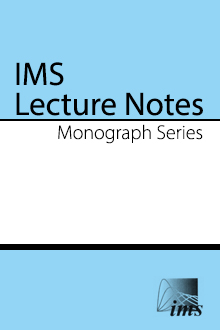Abstract
The first-order moving average model or MA(1) is given by $X_t=Z_t-\theta_0 Z_{t-1}$, with independent and identically distributed $\{Z_t\}$. This is arguably the simplest time series model that one can write down. The MA(1) with unit root ($\theta_0=1$) arises naturally in a variety of time series applications. For example, if an underlying time series consists of a linear trend plus white noise errors, then the differenced series is an MA(1) with unit root. In such cases, testing for a unit root of the differenced series is equivalent to testing the adequacy of the trend plus noise model. The unit root problem also arises naturally in a signal plus noise model in which the signal is modeled as a random walk. The differenced series follows a MA(1) model and has a unit root if and only if the random walk signal is in fact a constant.
The asymptotic theory of various estimators based on Gaussian likelihood has been developed for the unit root case and nearly unit root case ($\theta=1 +\beta/n, \beta\le0$). Unlike standard $1/\sqrt{n}$-asymptotics, these estimation procedures have $1/n$-asymptotics and a so-called pile-up effect, in which P$(\hat\theta= 1)$ converges to a positive value. One explanation for this pile-up phenomenon is the lack of identifiability of $\theta$ in the Gaussian case. That is, the Gaussian likelihood has the same value for the two sets of parameter values $(\theta,\sigma^2)$ and $(1/\theta,\theta^2\sigma^2$). It follows that $\theta=1$ is always a critical point of the likelihood function. In contrast, for non-Gaussian noise, $\theta$ is identifiable for all real values. Hence it is no longer clear whether or not the same pile-up phenomenon will persist in the non-Gaussian case. In this paper, we focus on limiting pile-up probabilities for estimates of $\theta_0$ based on a Laplace likelihood. In some cases, these estimates can be viewed as Least Absolute Deviation (LAD) estimates. Simulation results illustrate the limit theory.
Information
Digital Object Identifier: 10.1214/074921706000000923


